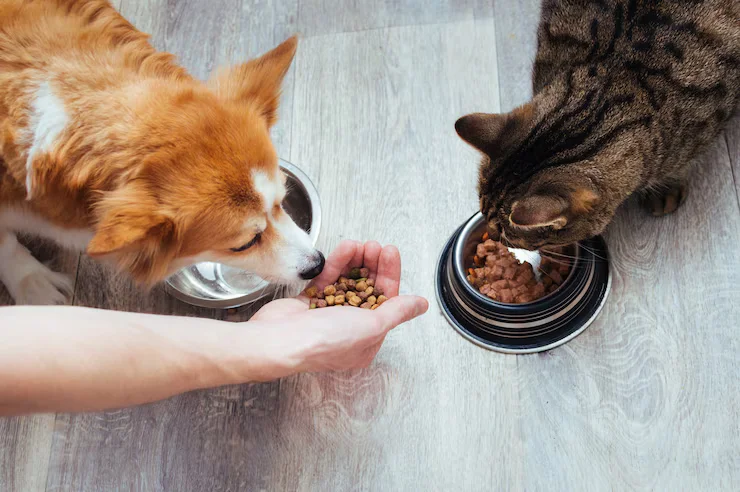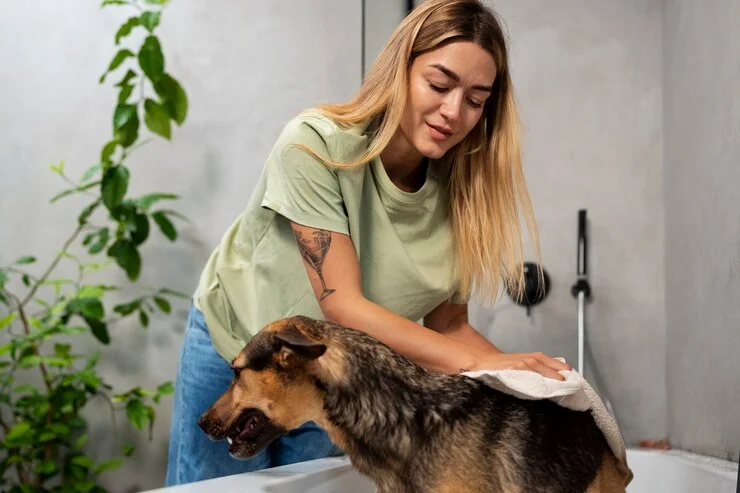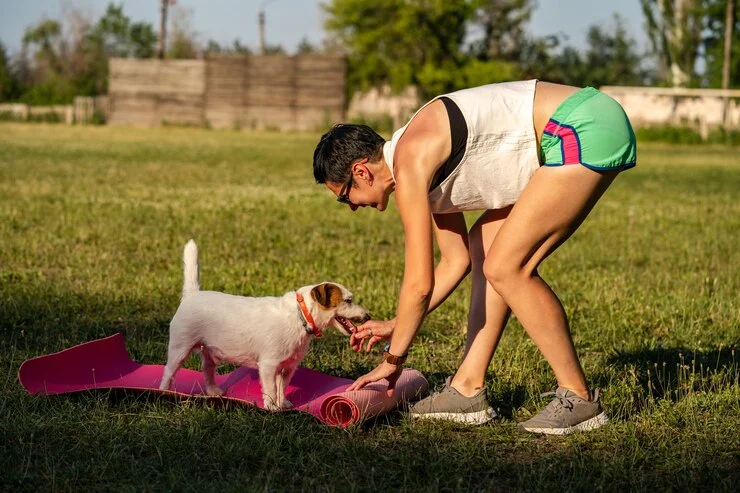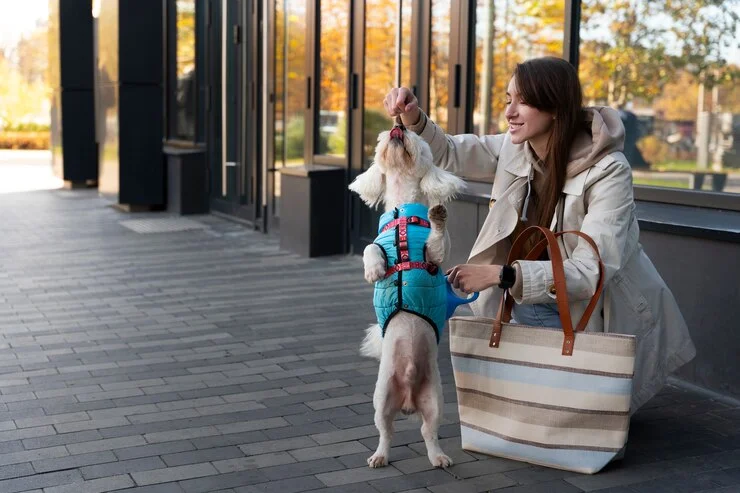Show Your Pet Some Love: Essential Pet Care Tips
Pets are more than just furry (or feathery or scaly) companions. They become cherished members of our families, bringing joy, love, and endless memories into our lives. However, pet ownership is a significant responsibility that requires dedication, patience, and a deep understanding of your pet’s unique needs. Pet care is a proper education.
As someone who has cared for various pets throughout my life, from dogs and cats to birds and reptiles. I cannot stress enough the importance of being a responsible and well-informed pet owner. In this comprehensive guide, I’ll share my personal experiences and expert knowledge to help you navigate the wonderful world of pet care, ensuring your furry, feathery, or scaly friend receives the love, attention, and care they deserve.
Understanding Your Pet’s Needs
Before welcoming a new pet into your home, it’s crucial to understand their specific needs and requirements. Different types of pets have vastly different care requirements, and it’s essential to research thoroughly to ensure you can provide the appropriate living environment, diet, and care routine.
For example, dogs and cats are among the most popular household pets, but their needs can vary greatly depending on their breed, size, and temperament. While dogs generally require more physical exercise and outdoor time, cats thrive in environments with vertical spaces for climbing and scratching. Understanding these nuances will help you create a suitable living space and establish a routine that meets your pet’s unique needs.
On the other hand, pets like birds, reptiles, and small mammals (such as hamsters, guinea pigs, or rabbits) have very specific habitat requirements. Birds need large, secure cages with plenty of perches and toys for mental stimulation, while reptiles require precise temperature and humidity levels to thrive.
Pro Tip: Before bringing a new pet home, research their specific breed or species, and consult with a veterinarian or experienced pet owner to ensure you can provide the appropriate living conditions and care.
Nutrition and Feeding
Proper nutrition is essential for your pet’s overall health and well-being. Choosing a high-quality, balanced diet tailored to your pet’s species, age, and activity level is crucial for their growth, development, and longevity.

For dogs and cats, there are numerous commercial pet food options available, ranging from dry kibble to wet, canned foods. When selecting a food, look for brands that use high-quality ingredients and meet the nutritional standards set by organizations like the Association of American Feed Control Officials (AAFCO).
It’s also important to feed your pet the appropriate portion sizes and stick to a consistent feeding schedule. Overfeeding can lead to obesity and related health issues, while underfeeding can cause malnutrition and other problems.
Pets like birds, reptiles, and small mammals often have more specialized dietary requirements. For example, parrots and other birds require a diet rich in vegetables, fruits, and seeds, while reptiles may need specific calcium and vitamin supplements to maintain healthy bones and shells.
Safety Note: Be aware of foods that are toxic to pets, such as chocolate, onions, and xylitol (a common sugar substitute). Always consult with your veterinarian or reliable sources before introducing new foods to your pet’s diet.
Grooming and Hygiene
Regular grooming and hygiene practices are essential for keeping your pet clean, healthy, and comfortable. Depending on your pet’s species and breed, these routines may include:

- Brushing: Regularly brushing your pet’s fur or feathers can help remove loose hair, prevent matting, and distribute natural oils for a healthy coat.
- Bathing: While some pets, like cats, are generally self-grooming, others may require occasional baths to keep them clean and odor-free.
- Nail trimming: Keeping your pet’s nails trimmed is important for their comfort and to prevent scratching or snagging on surfaces.
- Dental care: Brushing your pet’s teeth or providing dental treats can help prevent periodontal disease and other dental issues.
- Parasite prevention: Regularly using flea, tick, and other parasite control products can protect your pet’s health and prevent infestations in your home.
It’s also essential to keep your pet’s living environment clean and hygienic. This may involve regularly cleaning litter boxes, cages, or habitats, as well as washing bedding and toys to prevent the buildup of bacteria and odors.
Grooming Tip: Consider taking your pet to a professional groomer, especially for breeds with thick or high-maintenance coats. Groomers have the expertise and tools to properly groom your pet and can provide valuable advice on at-home grooming routines.
Exercise and Mental Stimulation
Just like humans, pets need regular physical activity and mental stimulation to stay healthy and happy. Exercise not only helps maintain a healthy weight and prevent obesity, but it also provides an outlet for your pet’s natural instincts and behaviors.

For dogs, daily walks, playtime in a secure yard or dog park, and interactive games like fetch or tug-of-war are excellent ways to meet their exercise needs. Cats, on the other hand, may prefer interactive toys that mimic the movements of prey, as well as vertical scratching posts and cat trees for climbing and scratching.
Birds and small mammals also benefit from regular playtime and enrichment activities. Providing them with appropriate toys, such as ladders, swings, and foraging toys, can help prevent boredom and encourage natural behaviors like climbing, chewing, and exploring.
In addition to physical exercise, it’s important to provide mental stimulation for your pet. This can include training sessions for obedience, tricks, and socialization, as well as puzzle toys or food-dispensing toys that encourage problem-solving and foraging behaviors.
Exercise Tip: Incorporate exercise and playtime into your daily routine, and consider hiring a professional dog walker or pet sitter if you’re away from home for extended periods. Regular physical and mental stimulation can help prevent destructive behaviors and strengthen the bond between you and your pet.
Veterinary Care
Regular veterinary care is essential for maintaining your pet’s health and well-being. Establishing a relationship with a trusted veterinarian from the start can help ensure your pet receives the proper preventative care, vaccinations, and timely treatment for any medical issues that may arise.
During routine check-ups, your veterinarian will perform a physical examination, update vaccinations, and provide recommendations for parasite prevention, dental care, and any age-specific or breed-specific health concerns.
It’s also important to be aware of the signs of illness or distress in your pet, such as:
- Changes in appetite or water consumption
- Lethargy or lack of energy
- Vomiting or diarrhea
- Excessive scratching or grooming
- Respiratory issues (coughing, sneezing, wheezing)
If you notice any of these signs, or if your pet experiences an injury or other emergency situation, seek veterinary care immediately.
Veterinary Tip: Consider investing in pet insurance or setting aside funds for unexpected veterinary expenses. Medical care for pets can be costly, and having a financial safety net can provide peace of mind and ensure your furry friend receives the care they need.
Safety and Pet-Proofing Your Home
Ensuring your pet’s safety and well-being starts at home. Pets are naturally curious and may inadvertently put themselves in harm’s way by exploring or chewing on potentially hazardous items.
To pet-proof your home, start by identifying and eliminating potential hazards, such as:
- Toxic plants or household chemicals
- Small objects that could be ingested
- Electrical cords or wires that could be chewed
- Open windows, balconies, or other potential fall hazards
It’s also essential to ensure your pet’s living space is secure and escape-proof. This may involve installing baby gates, securing doors and windows, and providing a safe, enclosed area for your pet when you’re away from home.

In addition to pet-proofing your home, consider microchipping your pet and ensuring they wear a collar with up-to-date identification tags. These simple measures can help increase the chances of your pet being returned to you if they ever become lost.
Safety Tip: Regularly review pet safety guidelines and stay informed about potential hazards or product recalls that could affect your furry friend. Keeping a well-stocked pet first aid kit on hand can also help you be prepared for minor injuries or emergencies.
Pet Behavior and Training
Understanding your pet’s body language and vocalizations is crucial for effective communication and establishing a strong bond. Pets use various cues, such as tail wags, ear positions, and meows or barks, to express their emotions and needs.
Positive reinforcement training techniques are recommended for teaching your pet desired behaviors and addressing any behavioral issues that may arise. This approach focuses on rewarding good behavior with treats, praise, or other positive reinforcement, rather than punishment or scolding.
Common behavioral issues that may benefit from training include:
- Excessive barking or meowing
- Destructive behaviors (chewing, scratching furniture)
- Aggression or fear towards people or other animals
- Potty training or litter box issues
Socialization is also an important aspect of pet behavior and training, especially for dogs and cats. Introducing your pet to new people, animals, and environments in a controlled and positive manner can help prevent fear, aggression, and other behavioral problems.
Training Tip: Consider enrolling in a group training class or working with a professional dog trainer, especially for puppies or dogs with specific behavioral challenges. Consistency and patience are key when it comes to training, and professional guidance can help ensure you’re using effective, humane techniques.
Travel and Relocation with Pets
Whether you’re planning a family vacation or relocating to a new home, it’s important to consider your pet’s needs and ensure their safety and comfort during the journey.

For travel by car, make sure your pet is properly secured in a crate or carrier, and plan for frequent stops to allow them to stretch their legs and relieve themselves. If traveling by plane, familiarize yourself with the airline’s pet policies and requirements, and consult with your veterinarian about any necessary health certificates or medications.
When it comes to pet-friendly accommodations, research your options in advance and book hotels or vacation rentals that welcome pets. Many establishments have specific pet policies or fees, so be sure to inquire about these details before making reservations.
If you’re moving to a new home, it’s important to prepare your pet for the transition. This may involve gradually introducing them to their new surroundings, updating their identification tags with your new address, and ensuring their living space is set up and familiar upon arrival.
For extended trips or moves, you may need to consider boarding your pet at a reputable facility or hiring a pet sitter to care for them in your home. Do your research and schedule trial visits or meet-and-greets to ensure your pet is comfortable with the caretakers and environment.
Travel Tip: Pack a “pet travel kit” with your furry friend’s essentials, such as food, water, bowls, toys, and any necessary medications or health records. Having these items easily accessible can help reduce stress and ensure your pet’s needs are met while on the go.
Caring for Aging Pets
As our beloved pets grow older, their needs and care requirements may change. It’s important to be aware of the unique challenges and considerations that come with caring for a senior pet.
For example, aging pets may require adjustments to their diet to accommodate changes in metabolism or dental health. They may also need more frequent potty breaks or assistance with mobility, such as ramps or pet stairs to access their favorite spots.
Age-related health issues, such as arthritis, diabetes, or cognitive decline, may also arise, requiring specialized care and management. Regular veterinary check-ups and monitoring can help identify and address these issues early on, ensuring your senior pet’s comfort and quality of life.
Providing a comfortable living environment is also crucial for aging pets. This may involve adding extra bedding or orthopedic beds, installing non-slip flooring or rugs, and ensuring their living space is warm and free from drafts.
As difficult as it may be, it’s important to have open and honest conversations with your veterinarian about end-of-life care and when it may be appropriate to consider humane euthanasia. While this decision is never easy, it’s important to prioritize your pet’s quality of life and minimize their suffering.
Senior Pet Tip: Cherish the time you have with your aging pet and create special memories together. Consider documenting their life through photos or videos, and involve the whole family in their care and comfort.
Conclusion
Caring for a pet is a rewarding and enriching experience, but it also requires dedication, patience, and a deep understanding of your pet’s unique needs. By following the guidelines and tips outlined in this comprehensive guide, you can ensure your furry, feathery, or scaly friend receives the love, attention, and care they deserve.
Remember, being a responsible pet owner involves more than just providing food and shelter – it’s about creating a safe, stimulating, and nurturing environment that allows your pet to thrive. Seek professional advice when needed, stay informed about the latest pet care practices, and always prioritize your pet’s well-being.
With the right knowledge and commitment, you can create a lifetime of cherished memories with your beloved pet companion.
If you have any further questions or need additional resources, consider consulting with a trusted veterinarian, animal behaviorist, or reputable pet care organizations.
Happy pet parenting!

